
A Complete Guide to Planning Your Desert RV Adventure
A Complete Guide to Planning Your Desert RV Adventure
Learn more about the undeniable magic of RVing in the Desert Southwest!
By: Jon & Nadia Bajuelo
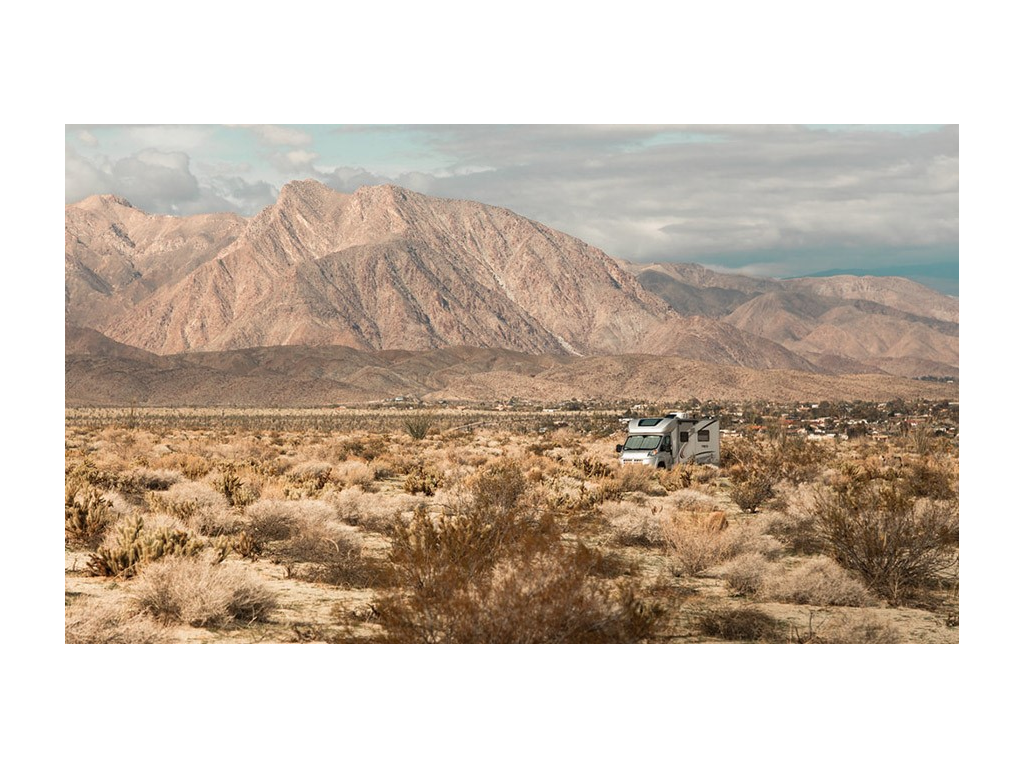
There’s nothing like driving your RV down wide-open roads, through towering landscapes in the glow of the afternoon sun.
Seemingly baked into us RVers is the allure of the road trip. While we may all RV for different reasons, that first RV pic we dogeared or pinned is very likely rooted in this.
Your RV will often provide a refreshing escape close to home, but when you are ready for a further-off road trip, let it take you down the roads of the desert Southwest.
Why the Desert Southwest is Perfect for RVers
Who doesn’t want the Insta version of RV travel? In the brochure version of life, your RV is rolling through a canyon. But real-life you is desperately trying to avoid volcanic black tank issues and wondering why the solar is not working in the awesome shady spot you just scored.
Brochure you is also impervious to mosquitoes and other members of the insect class. It’s always the perfect temperature, there’s no oppressive humidity or rain, and a hitched-up tow car is curiously missing as well.
In real life, bad weather happens, bugs are a thing, and often, not everyone in your party is ‘outdoorsy’.
Enter the desert Southwest. This area of the country is why you bought (or will buy) your RV, whether you know it yet or not.
Few if Any Mosquitoes
For the most part, you won’t find any mosquitoes in the Southwest. This means you don’t need to douse or slather yourself with bug repellant. There’s also a lack of humidity almost year-round (although summer does bring monsoon season).
Heat, humidity, cold, and bugs are often cited as reasons for avoiding the great outdoors. So, the less outdoorsy will be relatively comfy here.
It’s Very Accessible
Never driven an RV through mountain passes? Not much of a long-distance hiker? Not quite the adventure sport type? No worries! We’ve personally found the Southwest to be a very accessible region. The roads are open and easy to drive while still rewarding you with eye-popping landscapes.
This region has also been among the easier ones in which to find large RV camping spots without compromising the feeling of being in nature. We pulled a 28-ft travel trailer before our Trend days, and we found back then that you could find places to drop your trailer fairly easily to be able to drive into national parks.
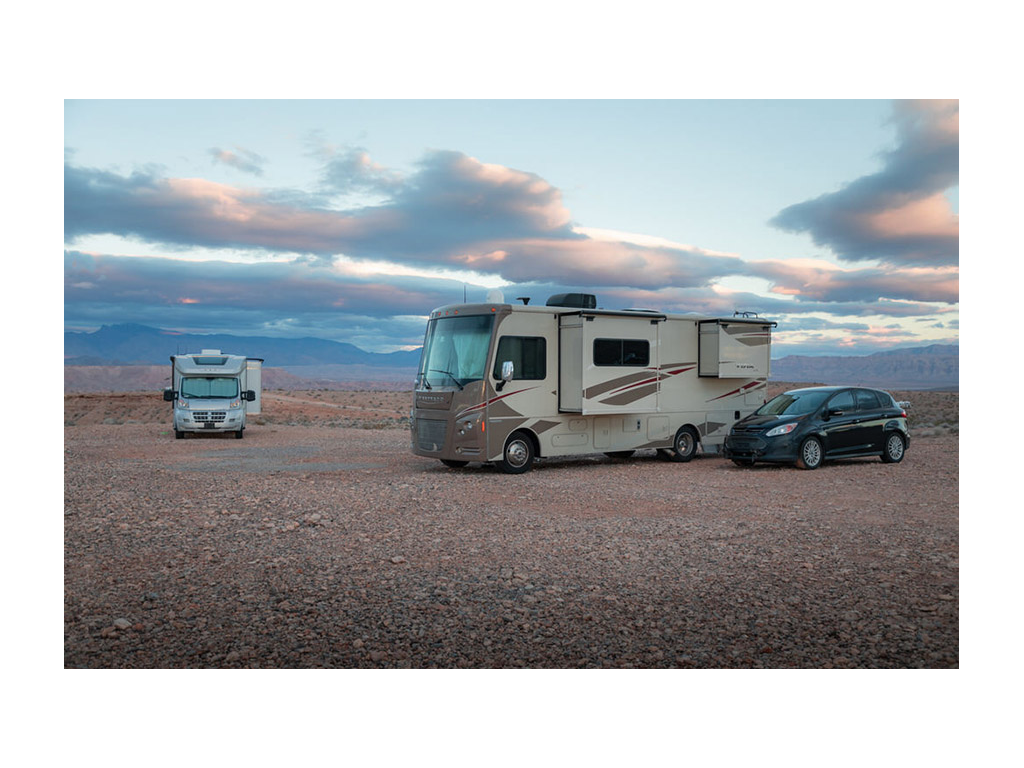
It’s also a very easy region to RV without a ‘toad’ (tow vehicle). If you’re only taking one or two long-distance trips a year, you may not want to deal with hitching up a tow car. The ideal tends to be loading everyone up in the RV and driving off for adventure.
Unlike other areas of the country, this is a region not known for short overpasses, covered bridges, or aggressive elevation changes.
We’ve had a pretty easy time running all errands and driving through national parks in just our Trend and no tow car. Short to mid-length Class As would do okay in most cases. And if you do tow, you’re generally parking your rig before driving through parks anyway.
Seasonal Tips for Planning Your Desert RV Trip
Ready to start planning your desert road trip? Where you decide to stop really depends on which season you go in, so we are sharing our favorite routes by time of year.
RVing in the Desert in Winter
Your Main Route
Plan to mostly travel along I-10 from Las Cruces, NM, to Palm Springs, CA. The more time you have, the more you can veer off I-10 for added points of interest or “mini-loops” along the way.
Must-See Stops
White Sands National Park in New Mexico
Now officially a national park, White Sands is not to be missed. While spring and fall are the best seasons to visit, winter visits (considered to be from November to February in White Sands) are possible as well, as daytime temps can be as balmy as 60F or as chilly as 30F. We’ve personally mostly visited in mid-March.
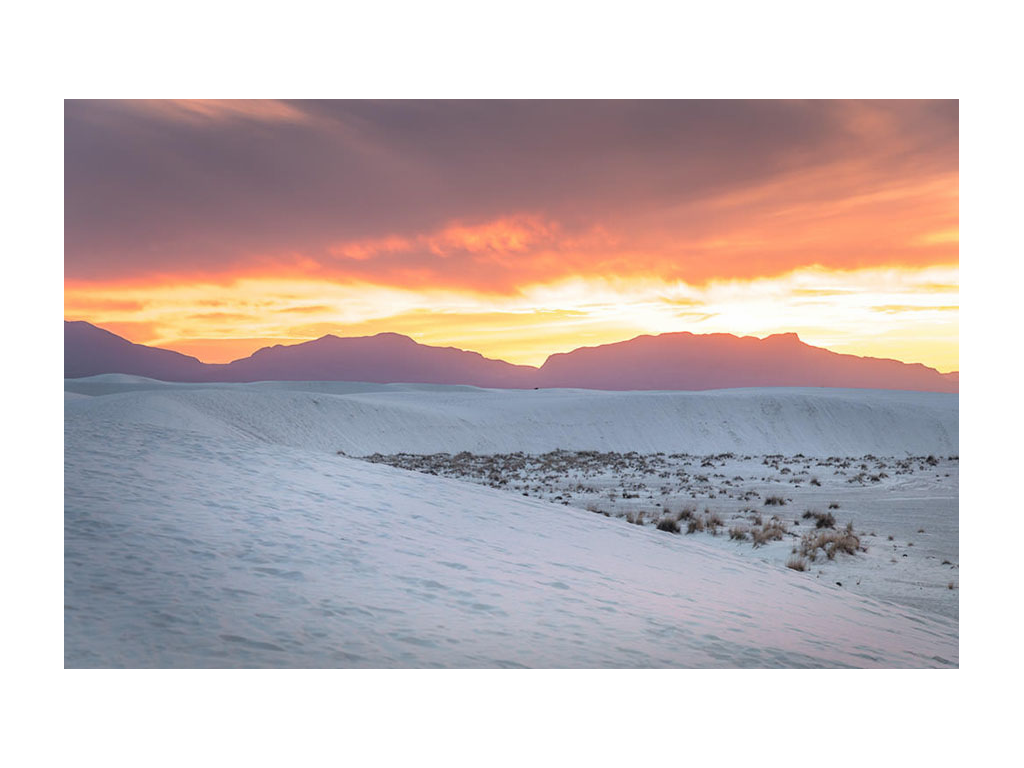
Weather permitting, be sure to watch a sunset at White Sands and drive the eight-mile Dunes Drive – stopping your RV along the various pull outs. You’ll very literally be able to take a few steps from your RV door to the gleaming, cool sand.
Places to Stay
There are no RV camping options within the park, so it’s best to book a private campground in Alamogordo or stay at Oliver Lee Memorial State Park (which has both 30- and 50-amp hookup options).
We love to boondock just outside Las Cruces on the Sierra Vista Trail which is nestled against the Organ Mountains-Desert Peaks National Monument. This will work great if you’re already comfortable boondocking and your rig is 30 ft or less.
For even more about White Sands, check out our in-depth guide here.
Saguaro National Park in Arizona
For a quintessential Southwest experience, head over to Tucson and visit Saguaro National Park. You’ll be able to get your fill of the famous Saguaro cacti dotting the landscape, sometimes as far as the eye can see. The park is split into two sides, and though you could technically visit year-round, November to March will give you the best window to visit.
Places to Stay
Our absolute favorite place to stay is Gilbert Ray campground just outside the southern edge of the Tucson Mountain District side of the park. (Note: electric hook-ups only, water spigots available between sites, dump and water station available).
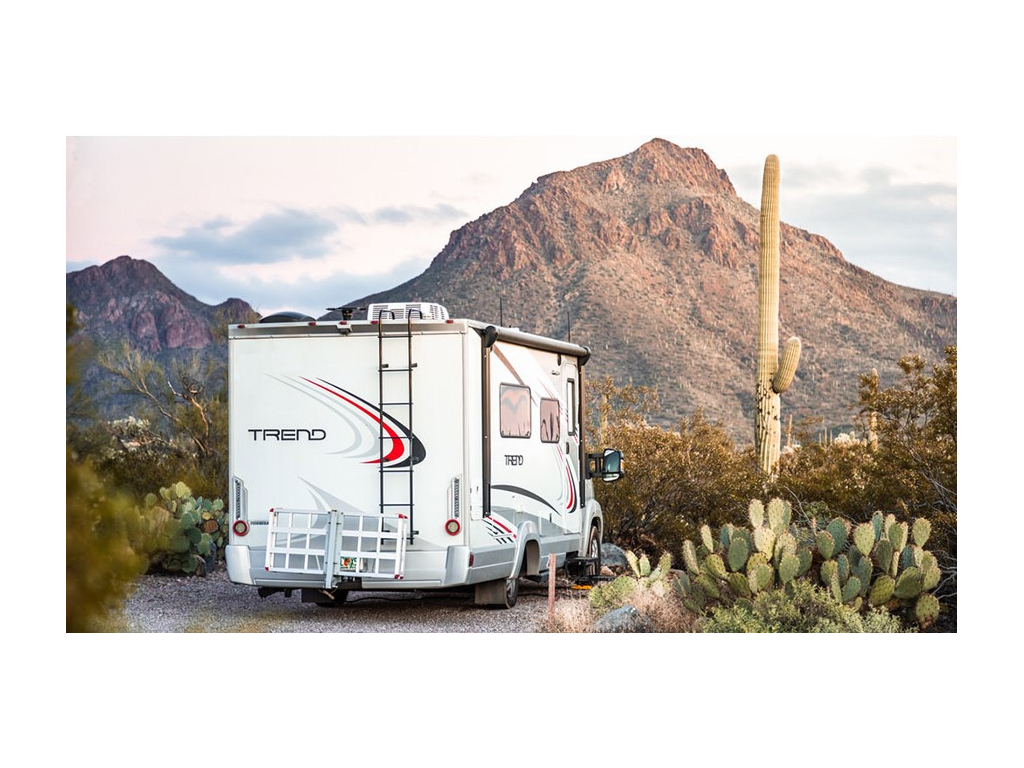
If you plan to just drive through Tucson and Saguaro NP, Picacho Peak State Park on I-10 just 40 miles north of Tucson is a great spot, too. Kartchner Caverns and Catalina State Parks are also great options. Hookups are available at all the state parks.
If you have more time: Before or after your Tucson stop, making the loop from Benson, AZ, to Tombstone, Bisbee, and then back up to I-10 through Sierra Vista, is full of beauty and some wild west fun. With even more time, add in the Chiricahua National Monument and the Wilcox wineries (or Sonoita wineries), if you’re a wine lover. However, if you’re in a bigger rig (more than 30 ft), you may want to skip this if you don’t have a tow car.
Joshua Tree National Park in California
Your next big stop will be Joshua Tree National Park. It’s roughly 350 miles away. So, you may want to break the trip up by hopping down to Organ Pipe National Monument. The Twin Peaks Campground inside the park can accommodate RVs up to 45 feet, but there are no hookups.
The towns of Ajo and Why have private RV campgrounds. You can then make a stop in Yuma or Quartzite before heading on to Joshua Tree.
Joshua Tree, to us, is a Dr. Suess meets The Flintstones kind of wonderland where two desert environments meet before your eyes (Colorado & Mojave deserts). As well-known as it is, we still think it’s underrated.
For more details, including a breakdown of where to camp and what rig sizes the park campgrounds accommodate, check out our guide here.
If time allows, explore Palm Springs, or head down to Anza-Borrego Desert State Park, and don’t forget to go dinosaur hunting in Borrego Springs.
Spring & Fall in the Desert
Your Main Route
During the Fall and Spring, not much of the winter route above needs to fall away, especially if any are on your bucket list. However, you can make some detours along the way as you move your route up along I-40 the warmer it is.
Looking at the big picture, you could move along I-40 coming from Santa Fe and Albuquerque, over to Flagstaff and the Grand Canyon, and move up into Utah. The warmer it is, the more your focus will likely be the Grand Canyon and north into the ‘Big Five’ parks of Utah.
The earlier or later it is, depending on the season, you could stick to the I-10 route, but head north of Phoenix and into stunning Sedona, the Grand Canyon, and then up into Utah.
Must-See Stops
Sedona, Arizona
The magical combination of red rock and gnarled juniper trees in Sedona is not to be missed. There is plenty of beautiful hiking and amazing drives.
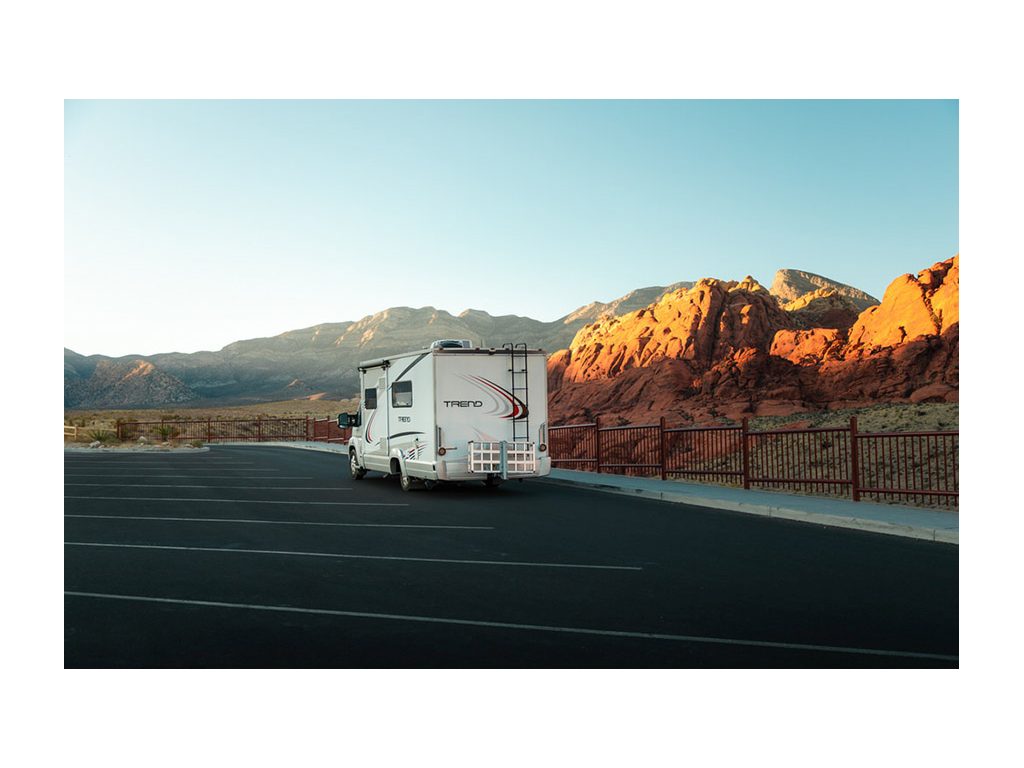
Places to Stay
We have always boondocked along Loy Butte Rd. There are spots that can accommodate Class As, but they fill up quickly. A popular option for hook-ups is Rancho Sedona RV Park, but be warned, it’s expensive - they charge per person over two people, charge more for teenagers, and have lots of rules. That said, it’s nicely maintained and close to downtown. However, you can also find additional private RV park options in nearby Cottonwood.
Grand Canyon National Park and Flagstaff, Arizona
Considered one of the seven wonders of the natural world, the Grand Canyon is quite special and definitely a sight to see in one’s lifetime. The South Rim is the most accessible, and as long as you stay at higher elevations along the rim, you’re good to go just about any time of year.
Places to Stay
We personally boondocked off of Forest Road 302, just outside the town of Tusayan. Just south of Tusayan, off of Hwy 64 is Ten X Campground (also no hookups). You can make reservations on recreation.gov between May and August when they’re open. There are a few sites that are first-come, first-served only.
For hookups and a shuttle to the South Rim Visitor’s Center, try Grand Canyon Camper Village. Inside the park, you can stay at either Mather or Desert View Campgrounds, but there are no hookups and it’s best to reserve several months in advance.
Las Vegas
This is one of our favorite places to stop. We’ve been through the area every season except for the summer. In the winter route above, head up into the area by way of Lake Havasu City after Joshua Tree. Drive down the Strip at night, if you’d like, but don’t miss out on the beauty surrounding Las Vegas. Check out Valley of Fire State Park, Red Rock Canyon National Conservation Area, Lake Mead National Recreation Area, and Hoover Dam.
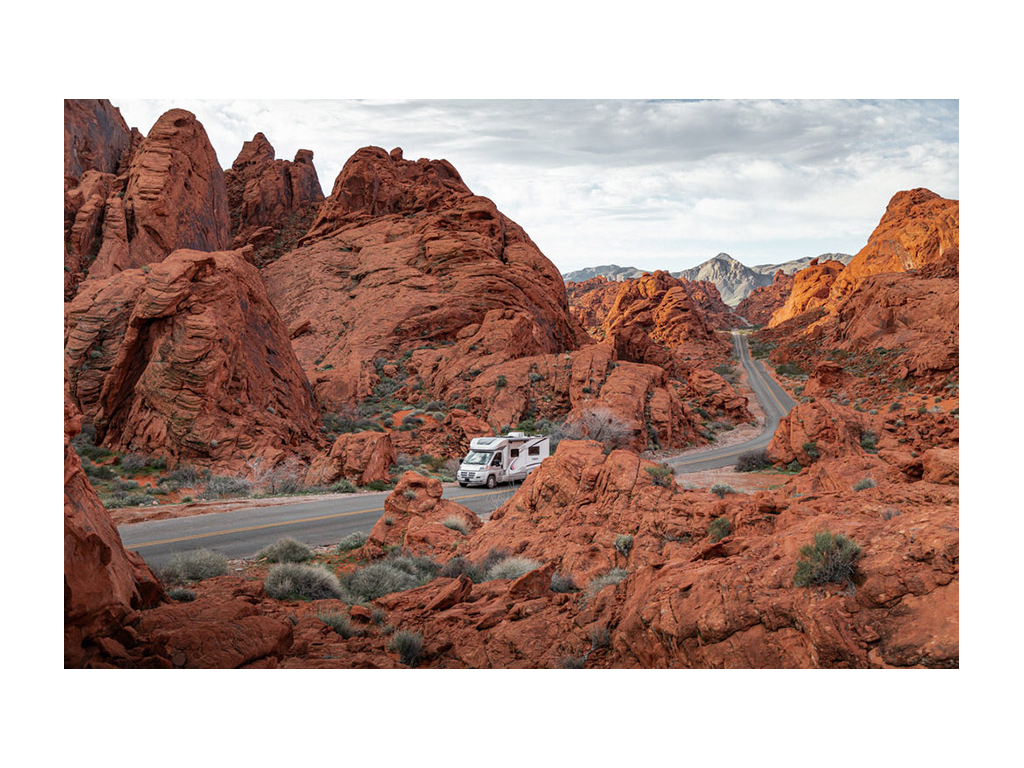
We love this area so much that we’ve written about exactly where to stay and what to do at these spots, in this Las Vegas RVing guide.
Death Valley National Park
Known for being the lowest (below sea level) and hottest U.S. national park, as well as for its elusive super blooms, Death Valley National Park is beautiful and mysterious.
October to April is the best time to visit since many of the in-park campgrounds close for summer due to the heat.
Places to Stay
For hookups and the chance to reserve your spot ahead of time, you’ll want to check out Furnace Creek campground. You can check out the elevation and amenities of this and other NPS-run campgrounds in the park by visiting the official national park website.
Two privately owned campgrounds are also located inside the park. These offer more sites with hookups. Check out Stovepipe Wells RV Park and Panamint Springs RV park for more info.
Utah’s Big 5 National Parks
How you work these amazing national parks into your route is really up to how much time you have. We’ve hit Zion NP, outside St. George, UT, after Valley of Fire State Park. If you can, it’s worth it to be a little cold and go in March just before the park shuttle starts up and you can’t drive through the park anymore. Otherwise, expect huge crowds, and only riding the park shuttle. We’ve stayed inside the park (Watchman Campground is awesome!) and also boondocked just outside La Verkin.
From Zion, you could head to Bryce Canyon National Park and take the incredible Scenic Byway 12 toward Capitol Reef Park. At that point, you just need to hit Arches National Park and Canyonlands to make it to all Big 5 parks.
Check out this GoLife guide to seeing all of Utah’s Big 5 national parks in one trip!
We ourselves are (frustratingly!) still missing Capitol Reef and Bryce Canyon National Park. We also haven’t completed the Dinosaur Diamond Prehistoric Highway (another National Scenic Byway).
I know some would disagree, but if you can only make it to one of the Utah national parks, we’d say go to Arches. We love it and we could go on at length regarding the hikes, where to stay, and what else to do in Moab. Moab is magical.
If you have more time: If you stay in Moab, you can easily also get to Canyonlands. The park actually has three distinct sections, with most visitors mostly sticking to Islands in the Sky. If you have a 4x4 or you can handle only going part of the way through (we took the Trend as far as we thought it could safely make it), make some time for the Needles.
And, if you’re wondering why it is that we’re still missing two of the Big 5, well.... It’s that you could also go into Utah by way of Page, Lake Powell, Horseshoe Bend, and Monument Valley.
How to Experience the Southwest in the Summer
If summer is the only window you’ve got for a destination trip, don’t worry. You don’t have to miss out on the desert beauty. You’ll just need to take extra precautions.
Desert Precautions
The following applies at all times in the desert, but most especially in the summer. Do not begin any hikes if the temperature is 85F or higher. Always pack extra water (aside from what’s in your fresh tank), keeping a minimum of one gallon per person (don’t forget pets!) per day.
Roads are wide open and towns with amenities can be far apart. Always know how much gas you have, and refill before you need to. If you get stranded, wait inside your RV (don’t bake in the sun).
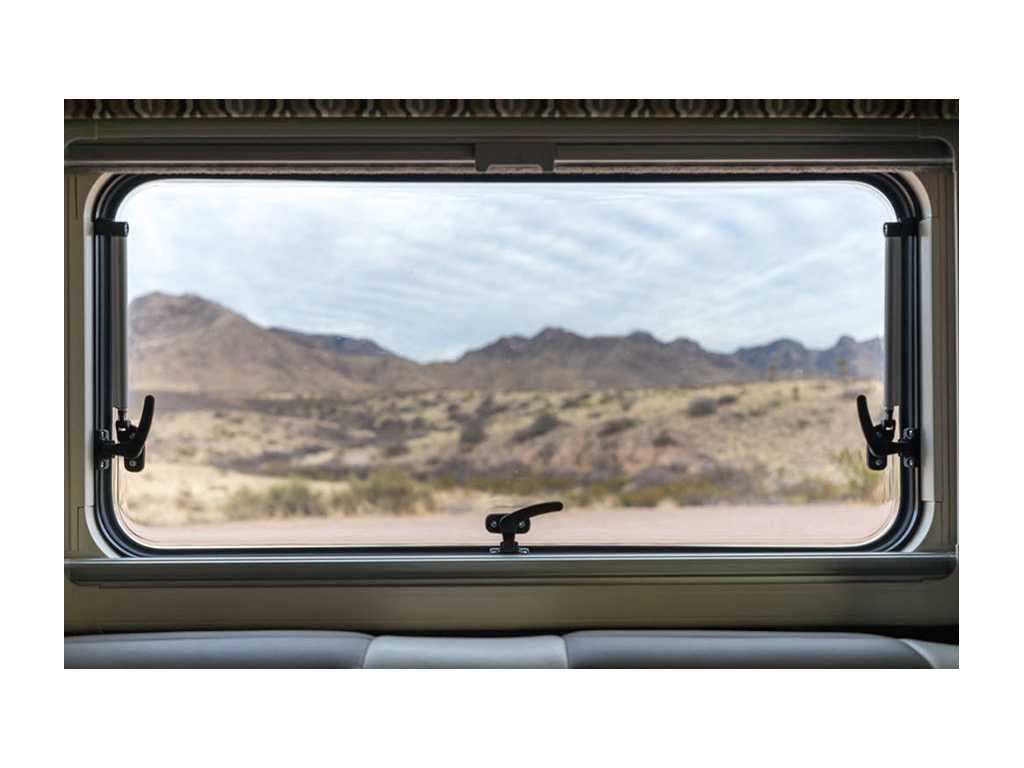
Summer Recommendations
Now the fun stuff. You can see a lot by just driving. That’s one of the great things about the Southwest. Drive through most of the parks and plan on doing more national scenic byways. Find more info on those at the Department of Transportation website. And check out summer guides and tips from the National Park Service as well - this is a great example for Death Valley National Park. You can also plan to stick to the higher elevations of Taos, Santa Fe, and Flagstaff.
Your RV desert adventure awaits. Where will you go first?
Comments
Comments on this post are moderated, so they will not appear instantly. All relevant questions and helpful notes are welcome! If you have a service inquiry or question related to your RV, please reach out to the customer care team directly using the phone numbers or contact form on this page .